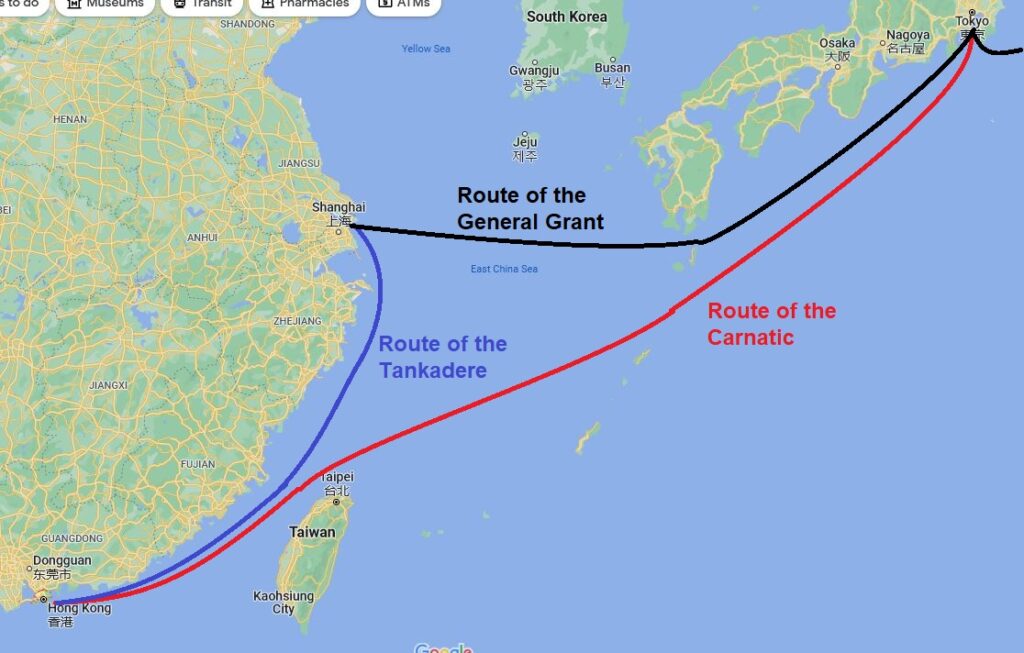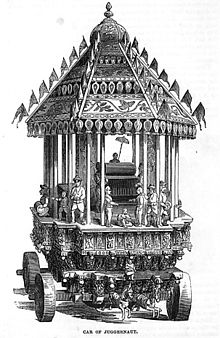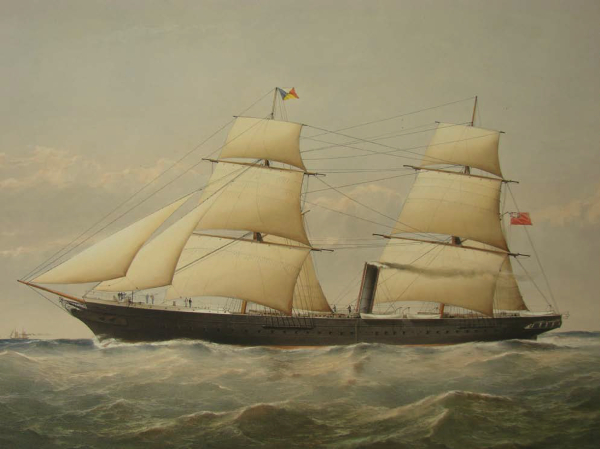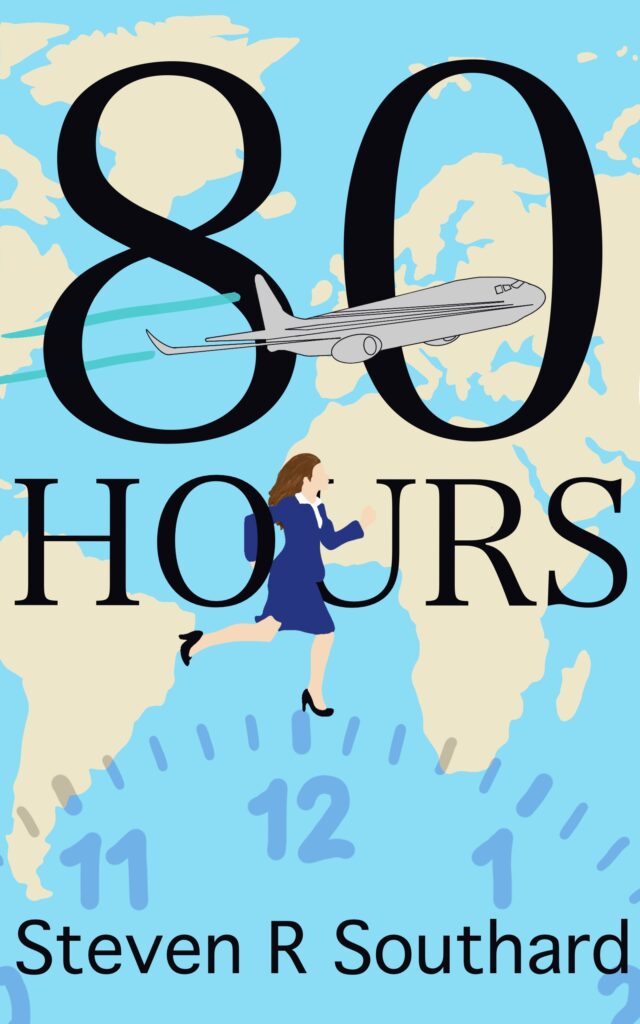Glad you’re back. We’re just past the halfway mark of our sesquicentennial trip Around the World in Eighty Days. Phileas Fogg has reached Yokohama, having traveled 12,819 miles. That’s 52.2% of the distance he must cover, and 53.8% of his time has elapsed.

Back on November 6 in Hong Kong, Detective Fix got Passepartout drunk and drugged in an opium den, then left him there. Waiters carried the servant to a bed. After waking and wandering in a stupor, he boarded the steamer Carnatic, then collapsed. Sailors carried him to his cabin. He awoke on the 7th, glad he’d made it to the ship, but dismayed to find neither Phileas Fogg nor Princess Aouda aboard.
Passepartout arrived in Yokohama on the 13th and joined an acrobatic troupe. The performers wore wings and headgear with fake noses of bamboo about six feet long or longer, in tribute to the god ‘Tingou.’ As its final act, the troupe imitated the ‘Car of Juggernaut,’ with acrobats balancing four levels high.
Meanwhile, having transferred to the SS General Grant in Singapore, Fogg and Aouda arrived in Yokohama on the 14th and found Passepartout had sailed on the Carnatic. By chance, they saw the performance of the acrobatic troupe. Passepartout recognized his master and ran to him, collapsing the Car of Juggernaut. Still wearing his wings and nose, he boarded the General Grant with his master and the princess.
The Carnatic existed, an actual ship of the Peninsular and Oriental Steam Navigation Company. In 1869, (before the time of Verne’s story) she ran aground on a coral reef in the Red Sea and broke apart with the loss of 31 lives. Rediscovered in 1984, the wreck now serves as a popular scuba diving site.
Where Verne got his information about acrobats with wings and long noses, I don’t know. By the term ‘Tingou,’ he likely meant Tengu, legendary creatures of Japanese folklore, often imagined with bird-like features. Why they’d form a ‘Car of Juggernaut’ arrangement, I can’t imagine, as that term owes its origin to India, not Japan.
By 1872, Yokohama had grown from a fishing village to Japan’s primary port, with 64,000 people. Only recently had the country ended its seclusion policy of Sakoku (chained country), and opened up to foreign trade. Emperor Meiji, the 122nd Emperor of Japan, ruled the nation. During his reign, he presided over the ‘Meiji Restoration’ which industrialized and modernized Japan.
Between that time and ours, Yokohama got destroyed twice, once by the Great Kanto earthquake of 1923 and later by World War II air raids from 1942 to 1945. Today, as the second most populous city in Japan, it’s home to 2.3M people. The Emperor (the 126th) is Naruhito, and the Prime Minister is Fumio Kishida.
Fogg required 3 days to sail from Shanghai to Yokohama, but today you could fly that route in 11 hours, with a stop in Shenzhen and arriving in nearby Tokyo. Passepartout’s 7-day trip from Hong Kong reduces to a 4-hour direct flight to Tokyo today.
On a related topic, my book 80 Hours is now available in paperback. For those of you who waited, or for those of you who prefer print books over ebooks, now is your chance. You can only get this version through Amazon. You’ll love the story, and it makes a great gift for the other Vernians in your life.
We don’t know where Detective Fix got off to, but Fogg and Aouda reunited with Passepartout and boarded the SS General Grant, bound for San Francisco. If it arrives on December 3, as scheduled, that’s the day you’ll read the next blogpost entry by—
Poseidon’s Scribe



